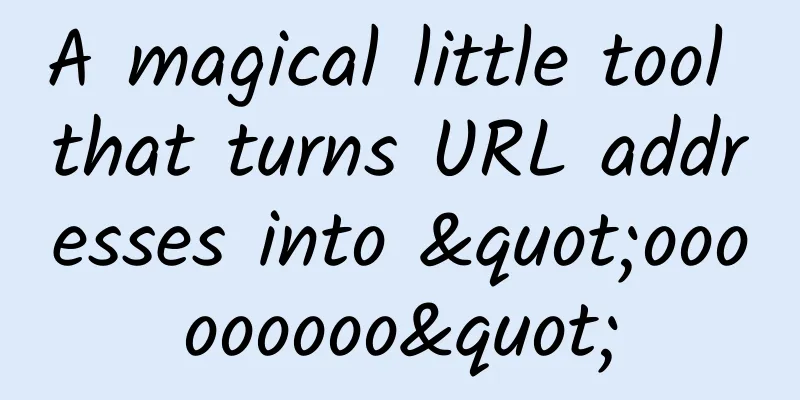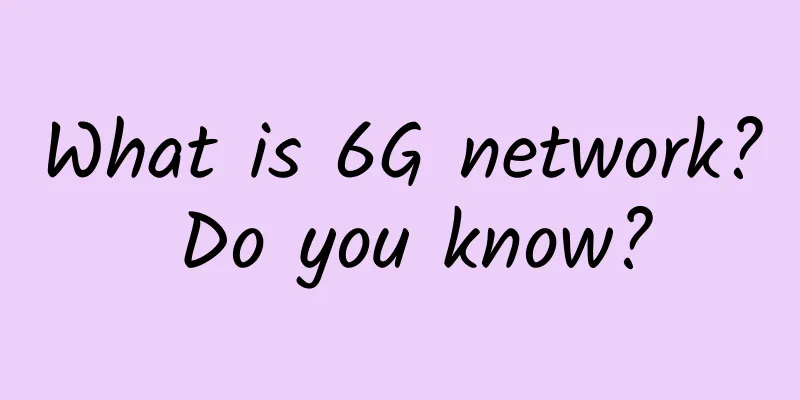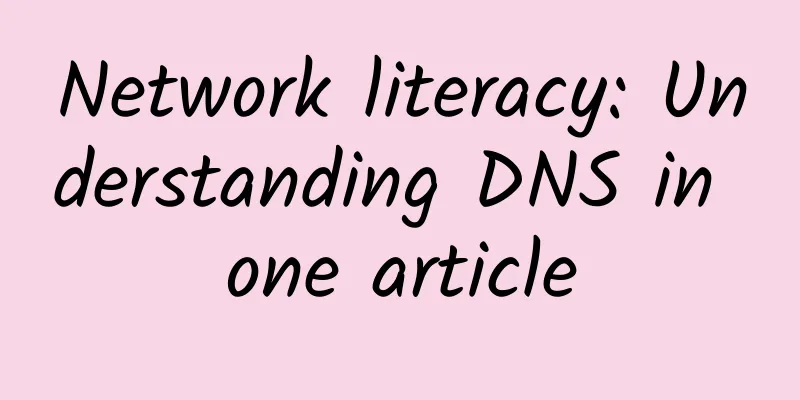A magical little tool that turns URL addresses into "ooooooooo"

|
I found a very creative gadget website. As shown in the cover picture, its function is very simple. It converts a URL address into ooooooooo. You can convert it back to the original address by accessing the converted address. The simple process is shown in the figure below. The conversion logic is a bit like the short link platform, except that this one makes your URL address very long, but it looks like ooooooooo. I was curious about how it was implemented, so I checked the source code. This article interprets its core implementation logic, which is very interesting and clever to implement this function. PrerequisitesBefore we start, let's first learn some knowledge points. Because it involves the conversion between two addresses, which is actually the conversion between strings, some encoding and decoding capabilities will be used. "Convert characters to utf8 array". Each character after conversion has a specific unique value. For example, the utf8 format array after http conversion is [104, 116, 116, 112]. The above is encoding, and the corresponding one below is decoding, "converting utf8 array to string", for example [99, 111, 109] The converted utf8 format array is com. "Represent a Number object as a string in base 4." toString is used more frequently, but there are fewer scenarios where parameters are passed in. The radix parameter is an optional parameter used to specify the base number to be converted, ranging from 2 to 36. If this parameter is not passed in, the decimal base is used by default. "Pad the specified characters on the left side of the string until the string reaches the specified length." The basic syntax is str.padStart(targetLength [, padString]).
URL encoding/decodingNow we will start the URL encoding logic. The core logic is as follows:
There are two key points to explain above. First, what does it mean to map to different forms of o? In fact, the converted o is not one "o", but 4 kinds, but the effect we see with the naked eye is very similar, which can be seen by the characters converted by encodeURI. This actually explains why the above code converts to 4-digit system and pads the left side with 0 to 4 digits. Because the above code defines this.enc as follows, there are only four types of "o" in total, and 4-digit system will only produce 0, 1, 2, and 3, so the converted utf8 characters can be matched one by one to these special "o". The final effect is an example of converting the http character:
The whole conversion process is over. Do you think the design is very good after reading it? After encoding, it is decoding. Decoding is to reverse the above process and restore it to the original URL address. One thing to note here is that parseInt parses 4 characters each time in 4-base mode. at lastThis is the end of sharing the core implementation code. After reading it, you may feel that it is not very complicated. Based on this design, other character effects may be extended. If you are interested, you can try it. Sharing the transcoded address with your friends will definitely bring different surprises. The following is an AI gadget address I converted. Click to see the effect~ Official website address: "ooooooooooooooooooooooooo.ooo" ooooooooooooooooooooo.ooo/ooooоооoоᴏοoοᴏοoοᴏooοᴏoᴏoᴏооoоᴏᴏoо ᴏᴏоооᴏооoᴏoоᴏоооᴏоооoоооᴏоооoᴏоооoоооοооᴏооооᴏoоᴏооооооᴏооооᴏо |
<<: Six advantages of single-pair Ethernet technology
>>: I am confused. If I want to store IP addresses, what data type is better?
Recommend
Twenty trends that will impact the information and communications industry in 2023
Attack and start again! As we bid farewell to the...
Why can TFO reduce TCP to 0 handshakes?
1. Overview In the previous article, why TCP need...
Farewell to the NYSE! The NYSE maintains the delisting decision of the three major operators
[[398109]] On May 7, the three major operators is...
These seven points of network technology, weak current people must know
Weak current people have one thing in common: mos...
vRAN, C-RAN, O-RAN, OpenRAN, the love-hate relationship between Open RAN
[[398639]] This article is reprinted from the WeC...
Why are they so obsessed with Tencent? How hard do the relevant departments work to review apps before they are put on the shelves?
Yesterday, the news that "Tencent's apps...
The role of edge computing and 5G in healthcare
Technology has changed the way we conduct diagnos...
How to promote 5G packages in small and medium-sized cities
From the perspective of package value, the curren...
The Internet of Things is gradually entering a new era. These will affect our lives in the future.
Today, the rapidly developing IoT devices can rea...
Is IT operation the next outlet for IT operation and maintenance?
With the development and popularization of popula...
DigitalVM: 50% off on all VPS, 1-10Gbps unlimited traffic starting from $4/month in the US/Japan/Singapore
Digital-VM is a foreign VPS service provider esta...
How to choose the correct branch jumper for the switch
This article will serve as a guide for using MTP ...
iPerf3 Tutorial: The Ultimate Tool for Easily Evaluating Network Performance
1. Introduction to iPerf3 iPerf3 is a widely used...
IDC: Ten predictions for China's ICT market in 2021
On November 10, IDC recently released the "T...
Aruba Launches New EdgeConnect Microbranch Solution to Power a Modern Hybrid Workplace Experience
Aruba, a Hewlett Packard Enterprise company (NYSE...









